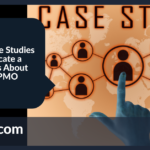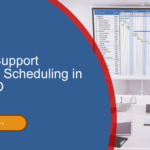It’s known in project management circles that project management offices (PMOs) can often have a short shelf life. Along with ensuring projects deliver on time and on budget, it’s up to a PMO to ensure its survival, and one way to do this is to educate the business you work in by being a relevant resource.
You and everyone working in your PMO will understand the value you add to the business, but it might not be immediately obvious to other people you work with. Initially, you’ll work on raising awareness of your PMO, but once people know you exist, the next step is education.
To help you educate other departments and the C-suite about the benefits your office adds to the business, we’re going to explore:
- How being a resource point for management tools will help your PMO profile
- What you need to do to become a management resource
- How you can measure the success of this PMO education strategy
- The types of business this strategy will be useful for
Why should my PMO become a management resource?
A significant part of your PMO’s mission is to improve the management and oversight of projects, making them more efficient and having them deliver on their targets. This drive for efficiency should be reflected across all areas of a business.
Your PMO will have a wealth of management resources and processes to make sure tasks are completed in the best way possible. While project management and daily office management do diverge, a lot of the information and documentation your PMO has can be repurposed by other business units.
When other managers and leaders see the resources and tools your PMO offers, they will buy into the work that you do. Overall, the business should see an improvement in efficiency measures, as well.
How do I make my PMO a management resource centre?
You need to make the resources you offer to project managers available across the whole business so that anyone who needs them can use or repurpose them.
The easiest way to do this is to make an online space, such as a section of the intranet or a cloud storage solution, and upload all your:
- Templates
- Documents
- Process maps
- Report layouts
It’s a good idea to make this a separate space from where your project teams access data in case there are issues with the location or accidental changes made.
You may also want to add a basic guide to accompany some of the more complicated pieces of information you upload. For example, a Gantt chart or a framework for prioritisation may look baffling to the untrained eye, so have a basic process to help other managers use it.
Make sure that you have a contact form or email that anyone using your resources can contact. Have one of the PMO team on hand to offer support when using documentation.
Offer job shadowing
We’ve talked about job shadowing in the past when looking at how to climb the PMO career ladder. Job shadowing is when someone takes a day or longer to watch and learn the job of someone in your PMO.
This can offer a great opportunity for someone looking to build their skills, knowledge and CV. It also works to help your PMO be understood by the wider business. You can educate about the roles of your PMO and the jobs within it, too.
How do I measure the success of sharing my resources to educate the business?
You can measure how many clicks and downloads your resources get as an initial way to see if your efforts are successful. This will help you understand what people in the business are looking for and can help you plan workshops and training if that’s part of your strategy.
Follow the use of a manager or team who are accessing your resources to see what the outcomes are. This can be hands-off, where you just ask for permission to compare data before and after using your resources and then use the data as proof that your work is improving efficiencies across the business.
What type of business is sharing PMO resources effective for education?
When your PMO is part of a remote business, having a passive way to educate your co-workers, such as sharing online resources, is effective. It can be hard to get time to schedule training or calls, but you can still offer resources to educate the business about your PMO.






